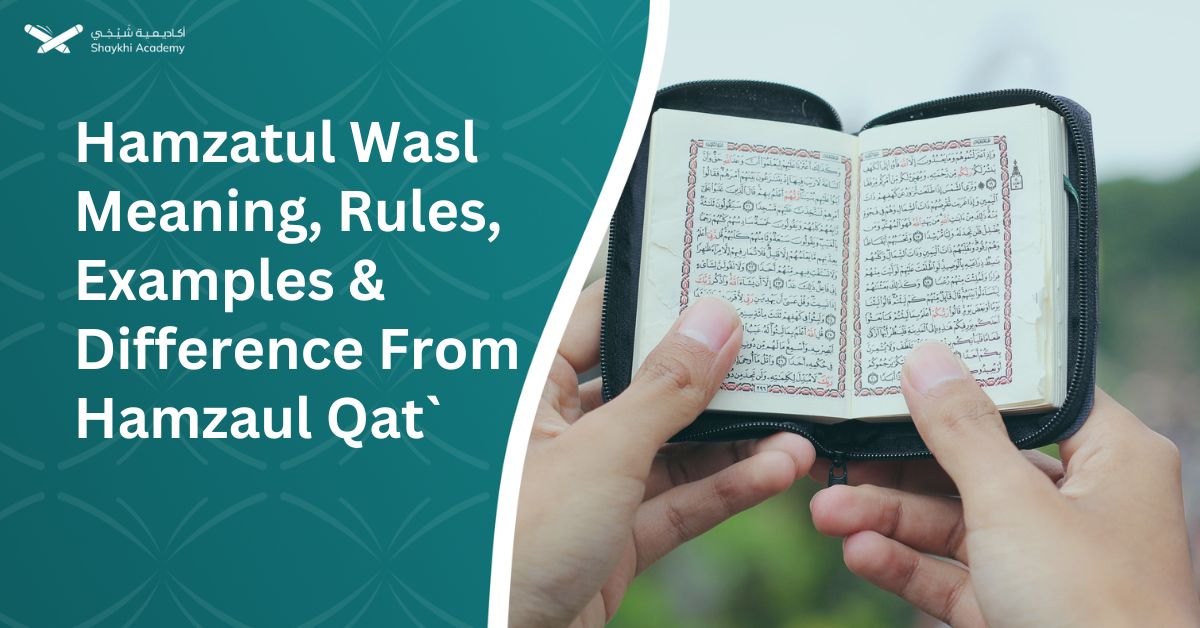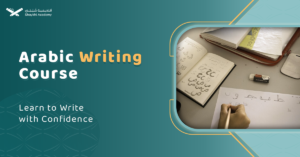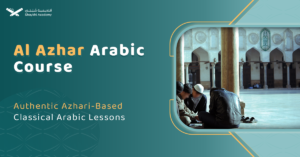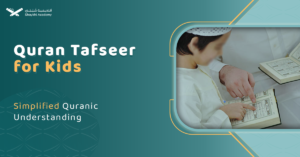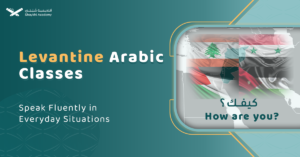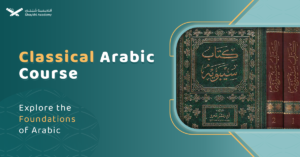Hamzatul Wasl is among the basic concepts that the reader must know and understand in order to adjust the correct recitation of the Holy Quran, so what is the meaning and rules of them?
Have you ever come across an Arabic word that starts with an alif but isn’t pronounced with the usual “a” sound? This might be because you’re encountering a special type of hamza called hamzatul wasl, also known as the connecting hamza.
In this article, we’ll delve into the world of hamzatul wasl, exploring its definition, pronunciation rules, and examples to enhance your Arabic reading and recitation, particularly when it comes to Tajweed (the art of reciting the Quran).

In a nutshell, Hamzatul Wasl, meaning “the connecting hamza” in Arabic, is a pronunciation quirk that affects the letter Alif at the beginning of certain words. It acts like a bridge between sounds, sometimes silent and sometimes pronounced with a vowel depending on its position.
Understanding when to pronounce it is crucial for accurate Arabic recitation, especially the Quran. Mastering this concept involves recognizing the silent hamza in the middle of sentences and pronouncing it with a glottal stop at the beginning.
What is Hamzatul Wasl?
Hamzatul Wasl literally meaning “the hamza of connection” in Arabic. Hamzatul wasl is an extra hamza that appears at the beginning of certain words. It acts as a bridge between words, affecting pronunciation depending on its position in a sentence.
Unlike a regular hamza (ء), which always has a distinct pronunciation (a glottal stop), hamzatul wasl can be silent or pronounced with a vowel sound depending on the context.
The hamzat al-wasl is the hamza that is pronounced at the beginning of a word in the beginning and dropped when it is connected. Its rule is that it is pronounced when starting with the word it contains, and dropped when it is connected to the previous word.
The hamzat al-wasl appears in (the ten nouns – the triliteral verb imperative – the past and the imperative and the infinitive of the five- and hexadecimal verbs – the definition “al”).
So, It is the hamza that appears at the beginning of speech but disappears when the word is connected to what precedes it. In other words, it is pronounced when starting with it and is dropped in the middle of a sentence and the hamza is not drawn on it, so its shape is like this “ا” without a hamza above it or even below it.
Hamzat al-Wasl is used to facilitate pronunciation and prevent starting with a consonant.
Hamzatul wasl examples
Hamzat al-wasl appears in 4 forms:
In the Ten Nouns
Among them:
“اسْم، ابْن، ابنة، امْرؤ، امرأة، اثنان in the nominative)) واثنين (in the accusative and genitive cases)، اثنتان (in the nominative case) واثنتين (in the accusative and genitive cases)، اسْت”.
In Pentasyllabic and Hexasyllabic Verbs:
Pentasyllabic verbs like: “انشغال، اطلاع، انكماش، انغلاق، افتراس، احتراز.”
Hexasyllabic verbs like: “استبسال، استعداد، استقالة، استعلام، استقصاء، استفتاح.”
In Definite Article “Al”:
like the noun الكتاب (the book): “الكتاب مفيد” (when starting: “Al-Kitabu”)
In Some Nouns by Convention:
like امرؤ (man): (when starting: “اِمْرُؤٌ”)
like امرأة (woman): (when starting: “اِمْرَأَةٌ”)
Hamzat al-wasl examples in the Quran:
There are many verses in the Holy Qur’an that include hamzat al-wasl. Here are some examples:
Surah Al-Baqarah, verse 2:
ذلك ٱلۡكِتَٰبُ لَا رَيۡبَ فِيهِ
(This is the Book about which there is no doubt)
The word “ٱلۡكِتَٰبُ” starts with a Hamzatul Wasl.
Surah Al-Fil, verse 1:
أَلَمۡ تَرَ كَيۡفَ فَعَلَ رَبُّكَ بِأَصۡحَٰبِ ٱلۡفِيلِ
(Have you not considered, [O Muhammad], how your Lord dealt with the companions of the elephant?)
“أَلَمۡ” begins with a Hamzatul Wasl.
Surah As-Saffat, verse 153:
أَصْطَفَى الْبَنَاتِ عَلَى الْبَنِينَ
He chose the daughters over the boys
The word ” أَصْطَفَى” starts with a Hamzatul Wasl.
Why Does Hamzatul Wasl Exist?
Reading Arabic – especially Quran recitation – follows specific rules. One such rule states that a word cannot begin with a sukoon (absence of a vowel). However, some words in their root form have a consonant at the beginning, creating a sukoon if pronounced in isolation. This is where hamzatul wasl comes in. It acts as a placeholder, allowing these words to connect seamlessly with preceding sounds and maintain the proper flow of recitation.
Facilitating Pronunciation
Hamzat al-Wasl facilitates the transition between letters and prevents starting with a consonant.
Standardizing Reading
It helps standardize the pronunciation of words in Arabic, making reading smoother and more fluent.
Achieving Correct Understanding
Proper understanding of word pronunciation contributes to the correct comprehension of Arabic texts, especially the Quran.
What are the rules of Hamzatul Wasl?
Understanding the rules governing Hamzat al-Wasl and witnessing its application through examples is essential for mastering this aspect of Arabic language intricacies and is pivotal for precise recitation. Let’s delve into the fundamental guidelines:
When starting with Hamzat Al-Wasl in the Qur’an, attention must be paid to the vowel of the third letter in the word to determine the vowel of Hamzat Al-Wasl:
If the third letter is vowelled with:
Dhammah (u):
Hamzat Al-Wasl is pronounced with a Dhammah, like “اُكتب” (Uktub – Write).
Kasrah or Fathah:
Hamzat Al-Wasl is pronounced with a Kasrah, like “اِذهب” (Izhab – Go) and “اِقرأ” (Iqra’ – Read).
When is Hamzatul Wasl Pronounced?
There are two main scenarios where hamzatul wasl is pronounced: If a word that starts with hamzatul wasl initiates a sentence or utterance, it’s pronounced with a vowel sound. The specific vowel depends on the grammatical context:
- With “Al-“: When hamzatul wasl precedes the definite article “al-” (ال), it takes a fat-ha (a) sound, creating the familiar “Al-” at the beginning of a word (e.g., Al-hamdulillah “الْحَمْدُ لِلَّهِ”).
- With Verbs: If hamzatul wasl appears at the beginning of a verb, it’s pronounced with either a kasra (i) or dammah (u) sound. The deciding factor is the third letter of the verb.
- With Nouns: All the nouns that begin with hamza are hamzat qat’, except for the ten names that begin with hamzat wasl. Following are the most popular seven irregular nouns where the hamzatul wasl is always pronounced with a kasra:
- ابن (ibn) – son
- ابنة (ibna) – daughter
- اثنتين (ithnātin) two (feminine dual)
- اثنين (ithnān) – two (masculine dual)
- اسم (ism) – name
- امرأة (imraʾah) – woman
- امرؤ (imruʾ) – man
Pronounced Hamzatul Wasl:
- اِقْرَأْ (Iqra): This means “read” and starts with the letter Alif, which represents Hamzatul Wasl. Here, you pronounce the Alif with a glottal stop.
- الْكِتَابُ (Al-Kitabu): This means “the book.” The Alif at the beginning (article “al”) is Hamzatul Wasl, and since it’s the first word, you pronounce it with a glottal stop.
- احْتَرَمَ (Ihtarama): This means “he respected.” Here, the Alif at the beginning is pronounced with a glottal stop.
When is Hamzatul Wasl Silent?
Hamzatul wasl is silent when it occurs within a sentence and is preceded by a vowel sound. This dropped pronunciation ensures a smooth flow of recitation by avoiding consecutive consonant sounds. Here are some examples:
- Fas-takbaroo “فَاسْتَكْبَرُوا” – The “a” sound comes from the fat-ha on the preceding “fa”.
- Rabil-‘aalameen “رَبِّ الْعَالَمِينَ” – The sound comes from the Kasra under the “Baa”.
Hamzatul Wasl following Harf Madd: In certain situations where the preceding word ends with a harf madd (an elongated vowel sound), a different Tajweed rule called “mani’ al-iqtiqa’ al-sakinayn” (preventing the meeting of two sakin sounds) comes into play. Here, both the hamzatul wasl and the harf madd are dropped (e.g., Fakasawnal-‘ithaama – “فَكَسَوْنَا الْعِظَامَ”).
Silent Hamzatul Wasl:
- وَالْمَدِيْنَةُ (Wa-al-Madinah): This means “and the city.” Here, the “al” at the beginning is Hamzatul Wasl. But because it follows the ending vowel “a” from the word “wa,” you don’t pronounce the Hamzatul Wasl and simply connect the sounds smoothly.
- فَالْأَرْضُ (Fa-al-Ardu): This means “so the earth.” The “al” at the beginning is Hamzatul Wasl. Since it follows the vowel “ف” “fa,” you connect the sounds smoothly without pronouncing the Hamzatul Wasl.
Hamzatul wasl worksheet
In order to master the understanding of the rule of the hamzat al-wasl and al- Qat’, you must use an educational plan that includes activities based on the rule of these hamzats.
Shaykhi Academy offers classes dedicated to learning hamzat al-wasl and al- Qat’ at the hands of specialized teachers who provide you with a simple explanation method with gamification activities and practical applications and other Activities based on rule of hamzat wasl and Qta’.
Book your free trial class now
Distinguishing Hamzatul Wasl from Hamzatul Qat’?
Hamzatul Qat’ is a type of hamza that is always pronounced, whether it appears at the beginning of a word or in the middle. Hamzat al-qat, it is the hamza that is confirmed in the beginning and connection, and the hamzat al-qat is always pronounced, whether it is at the beginning of the word or in the middle. It appears in (all nouns other than the ten nouns – four-letter verbs and their sources – three-letter verbs that begin with a hamza – letters)
Rules of hamzatul Qat’
At the beginning of speech: Hamzatul Qat’ is pronounced clearly, as in “أحمد” (Ahmad).
In connection: Hamzatul Qat’ remains pronounced, as in “قال أحمد” (Qal Ahmad – Ahmad said).
What is the Difference between Hamzatul Wasl and Hamzatul Qat’?
The key difference lies in pronunciation. Hamzatul qat’a, denoted by what looks like a small apostrophe on the hamza, is always pronounced with a glottal stop, regardless of its position.

The Arabic language features two distinct sounds represented by the hamza symbol: hamzatul wasl and hamzatul qat. Mastering their pronunciation is essential for achieving fluency and accurate recitation, particularly in the Quran. Here’s a breakdown of their key differences:
| Hamzatul Wasl (Connecting Hamza) | Hamzatul Qat’ (Disconnected Hamza) | |
| Function | Bridge, creating a smooth connection with the preceding word | Stepping stone, creating a break or separation between sounds |
| Pronunciation | Heard only at the beginning of a sentence or utterance. Silent in the middle as it assimilates with the sound before it. | Always pronounced, regardless of its position in a word. Maintains a distinct glottal stop sound. |
| Writing | Often written with a plain alif (ا) without a hamza symbol. In some Qur’anic fonts, a small (صـ) symbol might appear above the alif (ٱ) to indicate hamzatul wasl. | Represented by a hamza with a small alif (ء) and other vowel markings depending on the following vowel sound. |
| Example | The word “الـ” (al-) meaning “the” has a hamzatul wasl. In “الكتاب (al-kitaab)” (the book), it’s pronounced, but silent in “وَالكتاب (wa-al-kitaab)” (and the book) because it connects to “wa” (and). | The word “أُخْتُ (ukhtu)” (sister) has a hamzatul qat. The hamza with the damma (u) clearly indicates it’s pronounced as a separate sound. |
The terms themselves offer clues to their functions. “Wasl” comes from the Arabic verb “wasala” (وصل) meaning “to connect,” reflecting how hamzatul wasl bridges sounds for a smooth flow. Conversely, “qat” means “to cut” or “to break,” signifying the separation created by hamzatul qat.

Understanding these distinctions is not just about pronunciation accuracy. It can significantly impact the meaning conveyed. For instance, mispronouncing the hamza in “اقرأ (iqra’)” (read) as a hamzatul wasl at the beginning of a sentence would change it to “أقرأ (uqra’)” (punish), completely altering the intended message.
Hamzatul Qat as a Root Letter: In Arabic morphology, hamzatul qat can sometimes function as the first letter of a root word. This is particularly important when dealing with derived words. For example, “أَكَلَ (akala)” (he ate) has a hamzatul qat as its first letter, which is also part of the root for “eating” “أَكْلْ (akl)”.

Distinguishing Hamzatul Wasl from Alif
While both hamzatul wasl and alif appear as a single vertical line ( ا ), there’s a subtle difference in calligraphy. A regular alif might have a hamza on top (أ) or underneath (إ), or none at all. On the other hand, hamzatul wasl is often marked with a small saad (صـ) written above it (ٱ). This visual cue helps reciters identify the hamza and apply the correct pronunciation rules.

Tanween followed by Hamzatul Wasl
When a word ending with Tanween is followed by a word beginning with Hamzatul Wasl, the Hamzatul Wasl is dropped in pronunciation, and the Tanween is pronounced as a long vowel sound connecting directly to the next word.
For example:
Surah Al-Furqan verse 4:
إن هذا إلا إفك افتراه
This is nothing but a falsehood that he fabricated
How to Learn Hamzatul Wasl?
Here are some effective strategies to learn hamzatul wasl (the connecting hamza) in Arabic:
1. Understanding the Basics
- Grasp the Concept: First, solidify your understanding of hamzatul wasl’s role as a bridge, creating a smooth connection with the preceding word. It’s silent in the middle of a sentence but pronounced at the beginning.
- Phonetics: Focus on the distinct glottal stop sound made by the hamza at the beginning of a sentence. It’s a quick cough-like sound in the throat.
2. Training Your Ear and Muscles:
- Listen and Repeat: Immerse yourself in Quran recitations or audio lessons specifically focused on hamzatul wasl pronunciation. Pay close attention to how experienced reciters handle the hamza at the beginning and in the middle of sentences. Mimic their pronunciation as you listen repeatedly.
- Shadowing Technique: This technique involves listening to a recording (ideally with slower pronunciation for beginners) and repeating simultaneously, mimicking the speaker as closely as possible. This helps train your ear and pronunciation muscles.
3. Visual Cues and Resources:
- Quranic Fonts: Utilize Quranic fonts that display the small (صـ) symbol above the alif (ٱ) to indicate hamzatul wasl. This visual cue reinforces the concept of the silent hamza.
- Tajweed Resources: Explore Tajweed resources (the rules of Quran recitation) that often dedicate sections to hamzatul wasl pronunciation. These resources can provide detailed explanations and exercises.
- Arabic Pronunciation Apps: Several mobile applications focus on Arabic pronunciation. Look for apps that offer targeted exercises and audio examples for hamzatul wasl.
4. Practice Makes Perfect:
- Minimal Pairs: Practice with minimal pairs – words that differ only by the presence or absence of the pronounced hamzatul wasl. Examples include “اقرأ (iqra’)” (you read) vs “أقرأ (Aqra’)” (I read). Focus on the subtle difference in pronunciation that changes the meaning entirely.
- Read Aloud: Regularly read Arabic texts aloud, paying specific attention to hamzatul wasl at the beginning of sentences and its silent nature within sentences. This consistent practice reinforces proper pronunciation.
5. Seeking Guidance:
- Tutoring: Consider working with a qualified Arabic tutor who can provide personalized feedback on your hamzatul wasl pronunciation. They can identify areas needing improvement and offer tailored exercises.
- Online Quran Classes: Reliable online platforms like Shaykhi Academy offer Quran classes with a focus on proper Tajweed, including hamzatul wasl pronunciation.

Mastering Hamzatul Wasl and Beyond: Master Quran Recitation with Shaykhi’s Online Tajweed Course
This article delved into the intricacies of Hamzatul Wasl, explaining its role in connecting words and avoiding harsh pronunciations. By understanding when and how to pronounce the alif with a light breath (hamza), you can elevate your Quran recitation and gain a deeper appreciation for the language’s eloquence.
But mastering Hamzatul Wasl is just the first step. The Quran is filled with rich Tajweed rules that govern articulation, pronunciation, and beautification of recitation.
Ready to embark on a comprehensive journey of Tajweed mastery?
Shaykhi Academy’s Online Tajweed Course offers a structured and engaging program designed to equip you with all the necessary skills.
Here’s how our course can transform your Quran recitation:
- In-depth Tajweed knowledge: Go beyond Hamzatul Wasl and explore all the essential Tajweed rules, from Makharij and Sifat to proper pronunciation of letters, Madd (lengthening), and stopping and starting signs.
- Expert guidance: Our certified native Arabic tutors, both male and female, will provide personalized instruction and tailor the learning experience to your needs.
- Practical application: Learn by doing! The course focuses on practical exercises to help you confidently apply Tajweed rules and refine your recitation.
- Fluency and confidence: By the end of the program, you’ll be able to recite the Quran with fluency, accuracy, and a deeper understanding of Tajweed principles.

Shaykhi Academy goes the extra mile to ensure your success:
- Flexible learning options: Choose a study plan that suits your schedule and budget. We offer family plans and introductory discounts to make learning Tajweed accessible.
- Seamless online platform: Our interactive platform makes learning Tajweed convenient and engaging, allowing you to learn from anywhere.
- Continuous progress tracking: Monitor your development through regular assessments and personalized feedback from your tutor.
- Unwavering support: Enjoy the flexibility to cancel your subscription anytime and the freedom to choose your preferred Quran teacher.
Don’t let your Quran recitation journey stop at Hamzatul Wasl!
Let Shaykhi Academy be your guide on this enriching journey. Book your FREE trial today!

Conclusion
In conclusion, mastering the nuances of Hamzatul Wasl is not just about pronunciation accuracy but also about understanding its role in maintaining the fluidity and integrity of Arabic language, particularly in Quranic recitation.
Through comprehending its pronunciation rules, distinguishing it from Hamzatul Qat’, and employing effective learning strategies, learners can enhance their fluency and precision in reciting Arabic texts.
From recognizing visual cues to engaging in targeted practice, each step contributes to a deeper understanding and appreciation of this crucial aspect of Arabic phonetics.
Ultimately, proficiency in Hamzatul Wasl not only enriches one’s linguistic abilities but also fosters a deeper connection with the rich cultural and spiritual heritage encapsulated within the Arabic language and its sacred texts.
